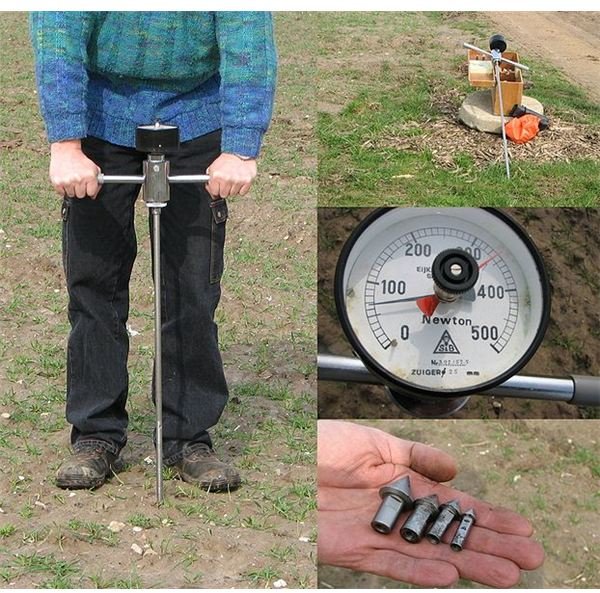Understanding Geotechnical Soil Reports
Most planning and design departments of companies into any form of construction will use soil reports to allow them to assess the safety of the structure that is being planned. This can relate to almost any form of construction and can involve buildings, roads, municipal projects, tunnels, dams, and many other structures. The reports will indicate whether the soil and geological conditions will give the necessary support for the planned structure.
Need for Soil Reports
Local authorities in most towns and cities will insist on such geotechnical soil reports from accredited agencies before they will give any consent to a building. The idea of such reports is to ensure that stability and foundation problems that can occur are known to the structural engineers who are designing the structure.
Such reports quite often involve drilling a required number of boreholes depending on the area involved. A machine drilling rig is used to extract samples of the soil, and these samples are then sent to geotechnical service testing laboratories for further analysis. Hand operated augers are also used to extract samples if they are required at lesser depths and the site is limited in area. Quite often strength tests are also made during the sampling process. Some structural consultants also insist on carrying out actual load tests on the foundation strata to obtain readings that are considered more reliable.
Image source: Wikimedia
Items Included in Geotechnical Soil Reports
Geotechnical soils reports will briefly review the geological history of the area coupled with a reconnaissance report of the particular site and its surroundings. The details of sampling will indicate the location of each borehole, its elevation and depth and a rough indication of the soils encountered at each level of the borehole. Groundwater conditions are also noted which allow for estimating future seepage into foundations, uplift pressures on foundations and the need for adequate drainage. The report will give a classification of all the various types of soils encountered along with their strengths as determined in the laboratory or on site. Finally the most important information in these reports will be the bearing capacity of the soil, its shear strength, and the possibilities of settlement or consolidation. Certain soils may have a potential for expansion, which can cause upheaval and other problems.
Understanding the Soil Report

A design engineer needs to know the condition of the soil beneath the structure proposed to be built and its capacity to support the structure safely. Of main importance to the engineer will be the allowable soil bearing pressure on the soil and the possibilities of settlement in the foundation after loads have been applied on it for a period of time. The existing groundwater table, the possibility of uplift pressures on the foundations because of this, and whether such groundwater needs to be drained away or the structure properly treated to counter any effects of dampness are also points that need consideration.
Image source: Wikimedia
There are times when the general slope of the land can trigger the possibility of a structure sliding once loads are imposed. These are countered by the sliding friction factor inherent in soils and which need to be part of the report. The chemical composition of the soil can quite often have deleterious effects on concrete and steel, and engineers need to be forewarned of these factors beforehand so that they can take action by suggesting different forms of cement or other methods to counter these corrosive effects.
A geotechnical report has to be firm in its recommendation for foundations and the depths at which safe soil bearing capacities will be available. They may also make recommendations for deeper foundations or piling. Geotechnical reports also need to indicate the seismic conditions prevalent in that area and the need for the designer to include these in structural designs.
How to read a soil report if you are a contractor: a contractor may look at geotechnical soils reports with a different perspective. The contractor will be concerned with the ground water table and problems that can be encountered in the dewatering of foundations. If rock is present either in sheet form or boulder form, it can hamper the progress of the foundation especially if time consuming drilling, breaking, and blasting is required. The report would also indicate to the contractor whether it will be possible to use rippers and excavators to remove the soil to reach the desired foundation level. Some designers do not permit this beyond a certain depth to prevent disturbance of the soil.
A soil test report will also indicate safe side slopes for temporary excavation. If these slopes are not steep, it greatly increases the amount of material that requires removal. It may also require sides to be shored up in extreme conditions, and this greatly increases construction costs. A contractor would also need to know from the report whether soil removed from the excavation can be reused for backfill. Soils with poor chemical properties or which are corrosive in nature may require complete removal from the site, thus increasing the cost of transporting this soil out and replacing it with an accepted fill material.
Municipal and civic authorities will need such reports to verify the designs submitted by engineers asking for building consent. It can also help them to prepare an overall geological and soil report for the entire town which can always be useful to set parameters for future construction.
References
Soils report - Saber
